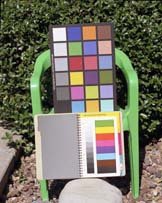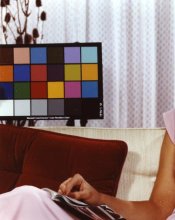Alright, here's the list:
Fuji 400
Fuji 100
Kodak 160NC
Fuji Reala 100
Kodak 160VC
Fuji 160S
Fuji 160C
Kodak Gold 100
Sensia 100
Fuji 400X
Fuji Astia
Fuji Provia
Fuji Velvia
Kodak E100GX
Kodak E100VS
Donations appreciated. Really.
Oh almost forgot about ektar.
Why not test some Fuji and Kodak 800 while you are at it? Also, there are three varieties of Velvia, and a Sensia 400. Fuji Pro 400H? Kodak Portra 400 NC and VC?
The list seems a bit wacky. If you are going to do it, why leave certain films out?
Here would be my initial list (from memory, so I may forget a few things too):
Fujicolor:
- Superia X-Tra from Press package 100, 200, 400, 800, and 1600 - Press pack films are pro versions of the consumer films
- Pro 160S/C, Pro 400H, Pro 800Z
- Reala
Kodacolor:
Their entire consumer line like Superia (with which I am not really familiar)
Portra 100T filtered to match light source, Portra 160NC/VC, Portra 400NC/VC, Portra 800
Ektar 100
400UC
Fujichrome:
T64 filtered to match light source
Velvia 50, 100, 100F
Astia 100F
Provia 100F and 400X (and 400F if I could find any in stock)
Sensia 100, 200, 400
Ektachrome:
64T filtered to match light source
E100G/GX/VS/SW, E200, EPP
Elite Chrome:
100, 200, 100 ultra color
I would not do it all at once, and might eliminate some films, but I would definitely include the entire pro color neg line from each company, including the fast films. For the first batch, I would start with all the pro neg films, plus Reala, Ektar, and 400UC. Then I would move on to consumer neg films. Then pro transparencies, then consumer transparencies.















